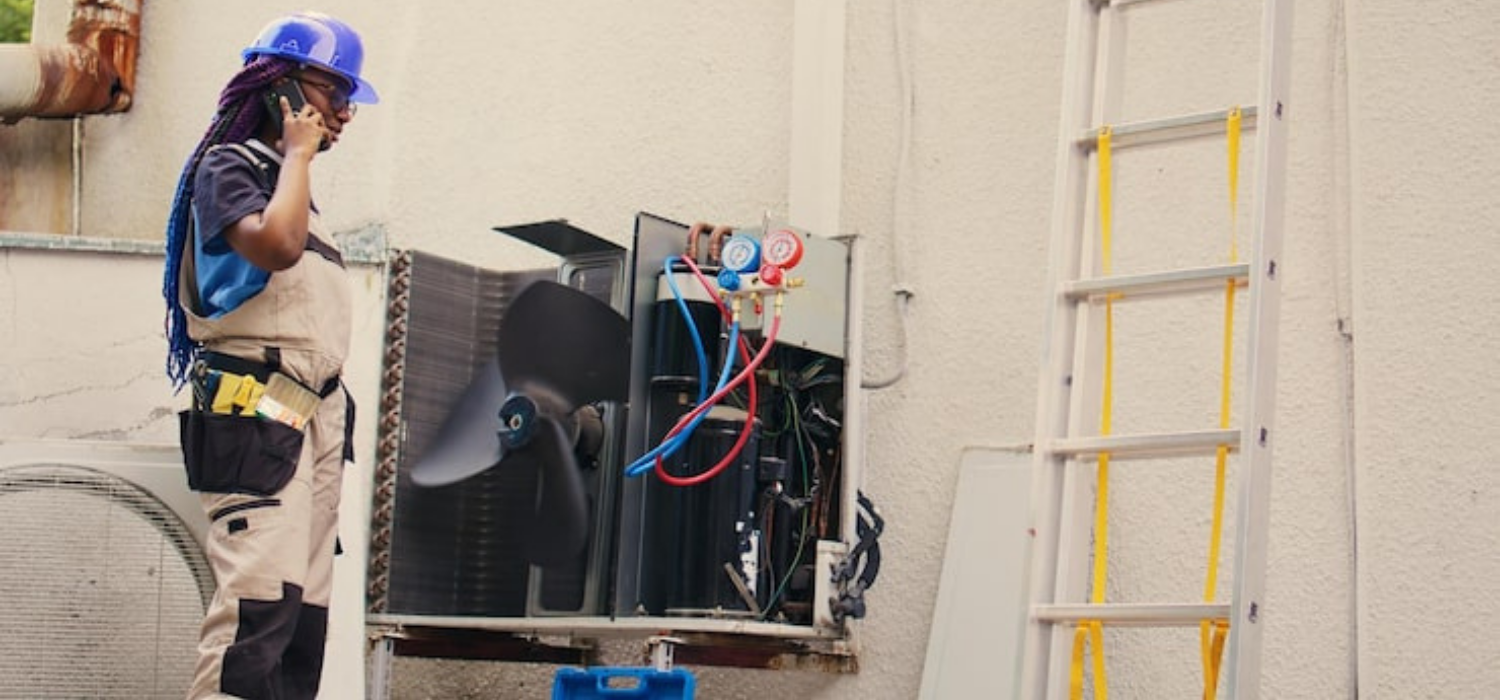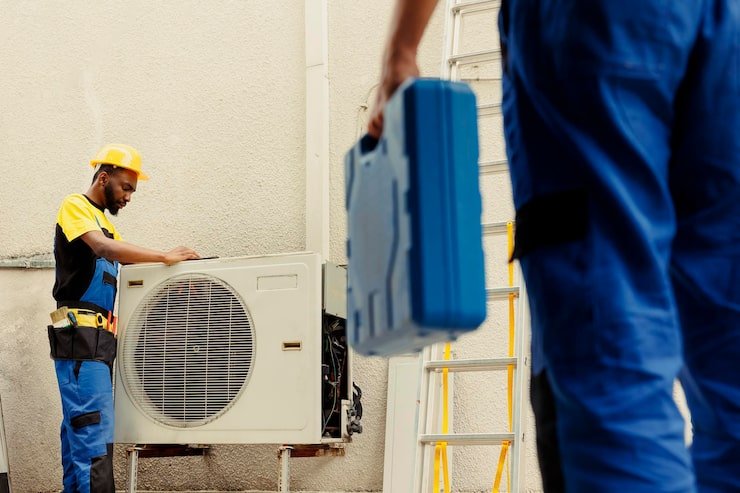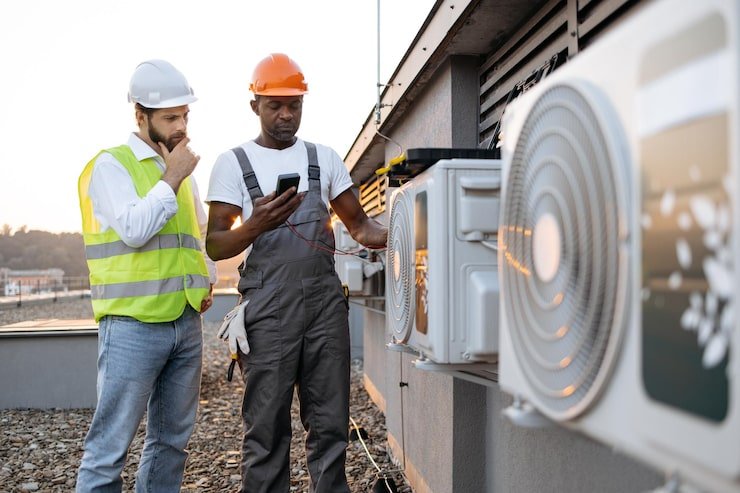- cecil@wwairspecialistllc.com
- (956)-556-1380
- Servicing San Antonio & Rio Grande Valley!

How to Ensure Your HVAC System is Ready for Winter in the Rio Grande Valley
The Rio Grande Valley may be known for long summers, but those cool, windy nights and occasional cold fronts remind homeowners that winter preparation still matters. When temperatures dip, you want reliable heat, efficient performance, and clean indoor air—not unexpected breakdowns or high utility bills.
At WW Air Specialist, we work with Valley homes and businesses every season. A little preventative care now saves money, keeps your family comfortable, and reduces emergency calls when the next cold snap arrives. Here’s a practical, step-by-step guide to getting your HVAC system winter-ready in the Rio Grande Valley. For a full list of options, see our HVAC services in Rio Grande Valley.
Why winter prep matters in the RGV
Even mild winter weather can expose weaknesses in a neglected HVAC system. Units that ran hard all summer may be due for a tune-up; duct leaks that didn’t matter during cooling season can make heating inefficient; and humidity swings can encourage mold or dust mite activity indoors. Preparing your system in advance:
- Prevents breakdowns on the first cold night
- Improves comfort and temperature consistency throughout the home
- Lowers heating costs by improving efficiency
- Extends the life of your equipment
A little time up front means fewer headaches later.
1. Schedule a professional HVAC inspection (don’t skip this)
A professional inspection is the single best thing you can do. During a winter-ready check, a technician will:
- Test thermostat accuracy and controls
- Inspect the heat exchanger (safety check for gas systems)
- Check electrical connections and capacitors
- Measure airflow and inspect fan motors
- Verify refrigerant and operation for heat pumps
- Look for signs of wear or parts that may fail soon
Timing: Aim to book your inspection in early fall-well before cold weather arrives, so any needed repairs or part replacements can be completed on your schedule.

2. Replace or upgrade air filters regularly
Filters are cheap, simple, and hugely effective.
- Replace standard filters every 1–3 months depending on use, pets, and dust levels.
- During high-allergy months or if someone in the home suffers from respiratory issues, move to high-efficiency MERV 8–13 or HEPA-style filtration where compatible.
- Never run a system with a visibly clogged filter-restricted airflow makes your furnace work harder and can lead to frozen coils or overheating.
Pro tip: Keep a two- to three-month supply of filters on hand so you never miss a change.
3. Test your thermostat and consider smart controls
Before you need heat, flip the thermostat to heat mode and verify the system responds. If your thermostat is old or inaccurate, consider upgrading:
- Programmable or smart thermostats can cut heating costs by automatically reducing temperature when you’re away or asleep.
- Smart thermostats also give you remote control and usage reports—great for spotting energy waste.
If you already have a smart thermostat, check that schedules are set for winter comfort and that any seasonal automations are enabled.

4. Inspect and seal ductwork clean vents
Leaky ducts are a hidden energy drain-conditioned air that disappears into attics or crawlspaces costs you money.
- Inspect visible duct joints and seams for gaps or disconnected runs.
- Seal leaks with mastic or UL-approved foil tape (don’t use cloth duct tape—its adhesive fails over time).
- If ducts are dusty, have musty odors, or you’re seeing increased allergy symptoms, schedule professional duct cleaning to remove built-up debris and contaminants.
- Make sure all supply and return registers are open and unobstructed.
Sealed, clean ducts improve system performance and indoor air quality.
5. Give attention to heat pumps and outdoor units
Many Valley homes use heat pumps for efficient year-round comfort. For outdoor units:
- Clear leaves, grass, and debris from around the unit—maintain at least 2 feet of clearance.
- Gently hose off the coils if dusty (power off first) but avoid bending the fins.
- For heat pumps, check defrost cycles and listen for unusual noises. If the unit doesn’t switch properly between heat and cool modes, call a pro.
A clean, unobstructed outdoor unit is much less likely to fail under load.
6. Control indoor humidity
Winter in the Valley can still present humidity challenges. Too much indoor moisture can encourage mold; too little can dry out skin and wood.
- Aim for 30–50% relative humidity indoors.
- Use a dehumidifier in damp areas or a humidifier if indoor air becomes excessively dry.
- Ensure the HVAC condensate drain is flowing freely—standing water in drain lines is a mold risk.
Your HVAC team can advise whether whole-home humidity control is right for your house.
7. Seal drafts and check insulation
Your HVAC system works best when the house holds heat. Walk through bright-line checks:
- Inspect weatherstripping at doors and windows. Replace if cracked.
- Caulk gaps around windows, exterior outlets, and penetrations.
- Check attic insulation levels—adding insulation can reduce heating load significantly.
Small DIY fixes often provide immediate comfort improvements and lower heating costs.
8. Know when to repair vs. replace
A few rules of thumb:
- If your system is less than 10 years old, repairs are often worthwhile. Regular maintenance keeps these systems efficient.
- If your system is 10–15 years or older and repairs are frequent or costly, replacement with a modern, high-efficiency unit may save money long-term.
- Consider replacement if your energy bills keep rising despite service, or if parts are no longer readily available.
WW Air Specialist can evaluate your system and provide an honest cost-vs-benefit recommendation.
9. Prepare an emergency plan
Even with preparation, systems can fail. Have an emergency plan:
- Keep technician contact info handy for after-hours service.
- Know where the furnace/air handler switch and circuit breaker are.
- Keep extra blankets and a space heater (used safely) on hand for temporary warmth.
If you suspect gas leaks, carbon monoxide, or electrical hazards, evacuate and call emergency services immediately.
Quick winter HVAC checklist - RGV edition
- Schedule professional HVAC inspection (early fall)
- Replace HVAC filters (every 1–3 months)
- Test thermostat; program or upgrade if needed
- Inspect and seal ductwork; book duct cleaning if needed
- Clear and inspect outdoor unit/heat pump
- Check humidity levels; add control if necessary
- Seal drafts, check insulation levels
- Confirm emergency service contact and plan
Feel free to copy this checklist into your website sidebar or offer it as a downloadable PDF for leads.
Why choose WW Air Specialist for winter HVAC service?
At WW Air Specialist, we understand the Rio Grande Valley climate and the unique demands it places on heating and cooling systems. Our technicians provide local, reliable seasonal tune-ups, duct cleaning, honest repairs, and energy-saving recommendations tailored to your home.
If you want help from a team that treats your home like our own, give us a call. We’ll inspect your system, handle any repairs, and help you choose upgrades that make sense for your comfort and budget.
